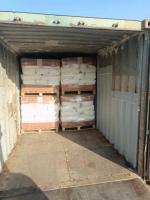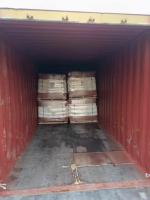Our Products
Polyacrylamide / cationic polyacrylamide of praestol A6291 can be replaced by Chinafloc C5008

cationic polyacrylamide of praestol A6291 can be replaced by Chinafloc C5008
Praestol A6291 is a high molecular weight, water sol-uble cationic polyelectrolyte widely used in the mining industry. Praestol A6291 provides rapid settling rates in often difficult to treat mineral slurries.
Cationic Polyacrylamide (CPAM): Properties, Applications, and Environmental Considerations
Cationic polyacrylamide (CPAM) is a type of synthetic polymer that contains cationic charged functional groups. It is a water-soluble polymer with a wide range of applications across various industries. CPAM is derived from polyacrylamide, a polymer that is often used
as a flocculant or coagulant aid in water and wastewater treatment. In this article, we will explore the properties of cationic polyacrylamide, its
main applications, and the environmental considerations associated with its use.
Table of Contents
Introduction to Cationic Polyacrylamide (CPAM)
Properties of Cationic Polyacrylamide
Main Applications of Cationic Polyacrylamide
a. Water and Wastewater Treatment
b. Pulp and Paper Industry
c. Textile Industry
d. Mining Industry
e. Oil and Gas Industry
f. Agriculture
g. Chemical Industry
h. Other Applications
Environmental Considerations
Conclusion
1. Introduction to Cationic Polyacrylamide (CPAM)
Cationic polyacrylamide, often abbreviated as CPAM, is a polymer that belongs to the polyacrylamide family. Unlike its nonionic and anionic
counterparts, cationic polyacrylamide contains positively charged cationic groups. These cationic functional groups make CPAM particularly
useful in applications where positively charged particles or substances need to be removed or flocculated.
CPAM is typically synthesized through the copolymerization of acrylamide with a cationic monomer, such as acryloxyethyltrimethyl ammonium
chloride (AETMAC) or diallyldimethylammonium chloride (DADMAC). This copolymerization process imparts a positive charge to the polymer
chains, making CPAM an effective flocculant and coagulant in various applications.
2. Properties of Cationic Polyacrylamide
Cationic polyacrylamide exhibits several key properties that make it suitable for a wide range of applications:
Positive Charge: The presence of cationic charges along the polymer chain allows CPAM to interact with negatively charged particles, such as
clay, organic matter, and microorganisms. This property makes it effective in flocculation and coagulation processes.
Water Solubility: Like other polyacrylamides, CPAM is water-soluble. It forms clear and viscous solutions when dissolved in water, which is advantageous for its application in aqueous systems.
High Molecular Weight: CPAM typically has a high molecular weight, which contributes to its flocculating and bridging capabilities. This property
enables it to aggregate and settle suspended solids in water.
pH Sensitivity: The performance of CPAM can be influenced by the pH of the solution. It is most effective in slightly acidic to neutral pH ranges,
and its charge density can be adjusted based on the specific application.
Compatibility: CPAM is compatible with other coagulants and flocculants, allowing it to be used in combination with other chemicals for enhanced
water treatment processes.
Biodegradability: Some CPAM formulations are designed to be biodegradable, addressing environmental concerns associated with the use of
synthetic polymers.
3. Main Applications of Cationic Polyacrylamide
Cationic polyacrylamide finds a wide range of applications in diverse industries due to its unique properties. Here are some of the main applications
of CPAM:
a. Water and Wastewater Treatment:
One of the primary applications of CPAM is in water and wastewater treatment. It is used as a flocculant or coagulant aid to enhance the removal
of suspended solids, organic matter, and pollutants from water. CPAM's positive charge allows it to neutralize negatively charged particles, promoting
flocculation and sedimentation. It is employed in municipal and industrial water treatment plants, as well as in processes like sludge dewatering and
clarification.
追风 10:27:55
b. Pulp and Paper Industry:
In the pulp and paper industry, CPAM is used as a retention aid and drainage aid during the papermaking process. It helps improve the retention of
fine particles, such as fillers and fibers, in the paper stock. This results in increased paper quality and reduced raw material consumption.
c. Textile Industry:
CPAM is utilized in the textile industry as a fixing agent and sizing agent. It helps bind dyes to the fabric, improving color fastness and overall dyeing
quality. Additionally, CPAM can be employed as a thickener for textile printing pastes.
d. Mining Industry:
In the mining industry, CPAM is used for solid-liquid separation processes. It aids in the settling and dewatering of mineral ores and tailings, leading to improved efficiency in mineral processing
operations.
e. Oil and Gas Industry:
CPAM is applied in the oil and gas sector for various purposes. It is used in drilling mud formulations to control fluid loss and improve wellbore
stability. Additionally, CPAM is employed in enhanced oil recovery (EOR) processes to improve the displacement of oil from reservoirs.
f. Agriculture:
CPAM can be used in agriculture to improve soil structure and prevent soil erosion. By adding CPAM to soil, it can help stabilize soil aggregates,
reduce runoff, and enhance water infiltration. These benefits can lead to improved crop yields and sustainability in agriculture.
g. Chemical Industry:
In the chemical industry, CPAM may be used for purposes such as sludge conditioning, wastewater treatment, and as a retention aid in chemical
processes where the removal of fine particles is required.
h. Other Applications:
Cationic polyacrylamide has several other applications, including its use in cosmetics and personal care products as a thickening agent and in the
production of emulsions and dispersions in various formulations.
4. Environmental Considerations
The use of cationic polyacrylamide, like other polymers, raises environmental considerations. Here are some important points to consider:
Biodegradability: Some CPAM formulations are designed to be biodegradable, reducing the long-term environmental impact. Biodegradable CPAM gradually breaks down into harmless byproducts, lessening concerns about polymer accumulation
in the environment.
Proper Handling: Proper handling and disposal practices are essential to minimize environmental impact. CPAM should be used in accordance with
relevant regulations, and excess or spilled material should be collected and disposed of responsibly.
Toxicity: While CPAM itself is not considered highly toxic, it's important to consider the potential impact of any impurities or additives that may be
present in commercial formulations. Some formulations may contain trace amounts of toxic substances, so understanding the composition of the
specific product being used is important.
Regulatory Compliance: It is crucial to comply with local and national regulations related to the use and discharge of CPAM. Many jurisdictions
have guidelines and standards in place to ensure the safe and environmentally responsible use of these chemicals.
Environmental Monitoring: Environmental monitoring should be conducted to assess the impact of CPAM usage in





